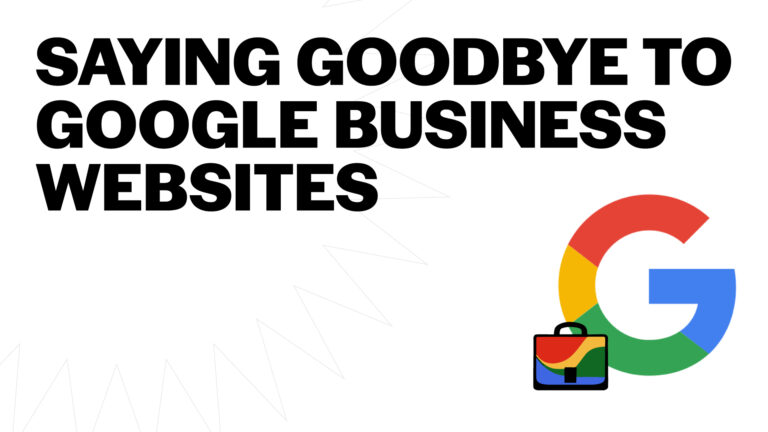Social media can be complicated, especially with the constant changes to the algorithm, new apps, and features. The success of your social media account and business heavily depends on staying caught up on trends and learning to adapt to new features and algorithms. As of today, new features, content, and people are driving the world of social media, and we’d like to share some of our insights into the ever-changing social media realm and offer some tips and tricks to get your social media up with the times.
User Behavior, Engagement, and Psychology
As we’ve seen over the past few years, social media has become a source of entertainment and a hub for news, shopping, reviews, and recommendations. Recent studies have shown that most Gen Z and Millennial users will search for relevant content or products more heavily on social media platforms like TikTok or Instagram before searching on Google. Not only does that change the game for social media, but it also changes how SEO can affect traffic to your website or eCommerce platforms. This is why social media is becoming increasingly important for businesses.
The impact of social media has become very apparent in the new generation of users. The attention span of current users is about 8.23 seconds (source), leaving that time or less for you to catch their eye and deliver a message. What’s important to you as a business owner is to make a sale; however, the intentions of users and consumers are very different. Aligning your message with current trends, topics, and relevant information can make your marketing efforts more enticing to your target audience.
Your target audience is defined by the need for your product or service and the behavior of the people you are working to captivate. In order for an audience to engage with your brand, learn what they are looking for and what they are most interested in. Create a range of content, like static posts and videos, to bring a sense of relatability and community around your product or service. This is also a great way to encourage User-Generated Content – which we’ll discuss later. A community surrounding your brand fosters excitement and loyalty among consumers, making users more likely to share the content and increasing your reach.
Rise of Video Content on Social Media Platforms
The introduction of video content to platforms like Instagram and Pinterest has sparked a new channel to reach your audience faster. As TikTok becomes increasingly popular, so has short-form video content across many platforms. If you first saw it on Instagram or Facebook, chances are it originated from TikTok. Reels, TikToks, and YouTube Shorts have become an avenue for creators and businesses to reach their audience without writing or creating “content.” Instead, they take a video narrating what is happening or show off their product.
Because people’s attention on social media is so brief, catching followers’ attention can be challenging with a long video or lengthy caption on a static post. Short-form videos have proven to be a source of quick and easy information for consumers. The faster, the better. Video content is more engaging than static or text content. Personally, I’d rather watch a movie than read a book, which seems to be the case when it comes to social media. Videos with a quick attention grabber and engaging shots are more likely to perform well and get the most interaction from viewers.
Video creation is an essential pillar of marketing at Venture. Our client’s needs are different, but we do our best to capture the business and align video content with their brand and call to action (CTA). One of our most recent projects with a local car wash was to create a long-form video about their top-tier wash and deliver short-form videos they can utilize on social media. (Check out the behind-the-scenes from this project on our Instagram!) You can do the same with a simple hero video about your business and reuse the content to promote your business in shorter, more engaging clips.
The Growing Significance of User-Generated Content (UGC)
User-generated content (also known as UGC or consumer-generated content) is original, brand-specific content created by customers and posted on social media or other marketing platforms. UGC comes in many forms, including images, videos, reviews, testimonials, or even podcasts. Think of the unboxing videos you see on TikTok or your friend sharing their outfit with a link to their new shirt. UGC is used across all stages of a buyer’s journey, from the video persuading them to make the purchase to the video or image they produce and then to the review they left after using the product or service.
User-generated content takes authenticity, trust, and loyalty to a whole new level. According to TINT, “93% of marketers agree that consumers trust content created by customers more than content created by brands.” Content from your peers is more likely to entice you to purchase something over a highly branded image or video. UGC opens the door for users to participate in your brand’s growth rather than just standing by. As we mentioned before, creating a community surrounding your brand can build your social media engagement and presence across the board.
Your brand’s reputation can be influenced by reviews and how other consumers perceive your brand. As we discussed before, social media is quickly becoming a search engine for people seeking to learn more about places, products, news, services, and advice. Having a solid brand, reputation, voice, and people to vouch for you can boost your brand’s visibility and engagement on social media and, in turn, encourage a conversion leading to more user-generated content. Reposting and reusing social media content is a great way to build your brand’s trust and authenticity.
Shopping on Social Media
Social media has proven to be a rising search engine, so why wouldn’t it be the latest eCommerce platform? Purchasing directly from an Instagram post is streamlining the marketing funnel. Rather than driving people to the link in your bio, consumers can buy directly from social media, increasing the likelihood of a conversion. Social shopping is a hybrid of eCommerce and social media, like Instagram or TikTok, creating a commerce ecosystem connecting millions of businesses, consumers, influencers, and vendors.
Social shopping has leveled up traditional commerce by going where the shoppers are. Retailers now have the opportunity to offer new types of shopping experiences, connect with customers, and engage influencers and creators directly from their social media pages. Not only is social media commerce a platform for large businesses, but it’s also a cost-effective eCommerce and marketing platform for growing small businesses.
Today’s shoppers place a high value on inclusiveness when purchasing items creating more opportunities to develop trust and a community surrounding your brand. Friends, Influencers, comments/reviews, and social media profiles can heavily influence customers buying decisions. That’s why a cohesive, inclusive, and trusted brand is vital to your success in any industry. Shoppers frequently observe what others are buying or have bought and take their lead. You can use social media to increase your selling power and leverage your marketing efforts through social media shopping. See social commerce in action here.
How AI, AR, and VR are Changing the Game
We often talk about the algorithm when we talk about social media, but not the AI behind the content you are fed. AI or artificial intelligence is a machine or program’s ability to perform cognitive functions like human minds, such as reasoning, perceiving, and learning. AI can recommend videos, text, or images to consumers that users may like based on previously consumed content, just like your For You Page on TikTok. AI has caused quite the buzz, especially with current happenings in Hollywood and the release of ChatGPT in recent months, and continues to affect the direction of social media with new features. We are excited to see where AI will take us, especially in the marketing industry. You can learn more about the pros and cons of AI in our blog post here.
AR or augmented reality is a technology that superimposes a computer-generated image on a user’s view of the real world. AR is a captivating new way to connect with customers and promote products. The presence of AR has been long-standing, beginning with Snapchat’s face filters and apps like Pokemon Go. As social media has evolved, more and more filters have emerged, even sparking brands to create filters to promote special events, like Gatorade’s Superbowl filter. As AR continues to become more popular and accessible, integrations, like VNTANA, for Facebook and Instagram ads will start utilizing 3D and AR to allow users to view products from every angle. AR is still in the early stages of development and will continue to evolve and become more prominent across marketing and other industries.
Social VR has become a new horizon for technology. VR has been around for quite some time. If you remember playing Sims, this was an early form of VR, but it has come a long way since. Facebook currently offers its own social VR experience with Oculus products. It acts as a chatroom, which we’re all familiar with. VR has since adopted its own apps and games for an immersive user experience. Apple recently announced its new VR headset, which will forever change how we interact with computers, social media, and gaming. We’ll be waiting as VR continues to develop, especially with social media.
Social Media Analytics
Social media analytics are a great way to view your progress and learn what content is most appealing to your target audience. Taking the time to go over your statistics can give great insight into your next marketing campaign and social media strategy. The steady rise of AI has introduced many new software, like Emplifi, to get AI-generated insight into your audience and performance. AI has the potential to learn and analyze data faster than humans allowing you to focus more on content creation and engagement with your followers.
At Venture, we review our social media analytics at the end of each month. Going over these analytics allows us to measure our growth, determine what went well, and continue to adjust our social media strategy. We love to involve our clients in their growth. Typically, we share an overview of things we thought went well and how we plan to improve over the next month. From there, we create new content aligning with what we learned and new trends on the rise to organically grow social media accounts across Instagram, Facebook, and other platforms.
Learning and adapting to new trends and relevant content can increase your brand’s visibility, improve engagement, and increase your conversion rate. Utilizing new tools, like AI, can speed up the analysis process and offer real-time insights into your social media performance. Social media analytics offer a peek into the future, and learning how to use them can benefit your business significantly.
Conclusion
The future of social media is dynamic and ever-evolving, presenting both opportunities and challenges for businesses. Staying up to date with the latest trends, algorithms, and features is crucial for success in this face-paced digital world. Understanding user behavior is key to captivating your target audience to deliver a compelling message. Video content has invaded social media platforms, providing a quick and easy way to connect with users. Leveraging user-generated content can build your brand’s authenticity and trust among consumers, while social shopping has transformed social media into a powerful eCommerce platform. New AI, AR, and VR technology is shaping the future of social media, offering new ways to interact, promote, and create immersive experiences. As we move with social media, analytics will provide insight into our audiences and allow us to develop highly-targeted and trending content. By embracing these trends and tools, you can navigate the ever-changing social media landscape and thrive in our current digital age.


